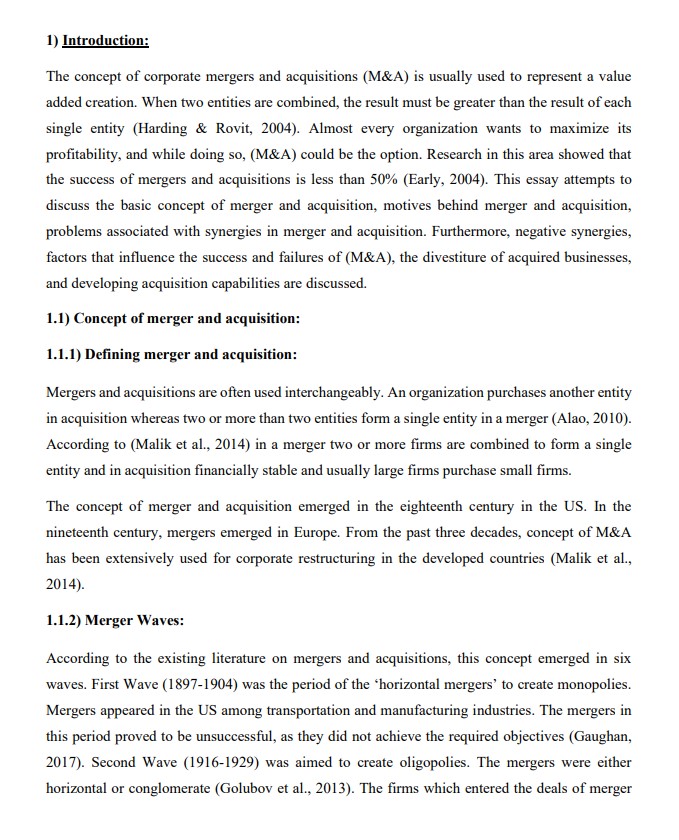FINANCE THEORY AND PRACTICE – CORPORATE MERGERS AND ACQUISITIONS: ARE SYNERGIES AND OTHER EXPECTED OUTCOMES ACHIEVED?
Summary:
Finance Theory and Practice
This note discusses corporate mergers and acquisitions, specifically focusing on the achievement of expected outcomes such as synergies. The motives behind mergers & acquisitions are explored, including synergy, growth, agency, and hubris motives. The challenges in valuing synergies and how M&A can be unsuccessful are also discussed. Factors that influence the success or failure of M&A are examined, including strategic motive, diversification degree, selection criteria, management involvement, culture, size difference, organization structure, control system, stakeholder examination, future capital need analysis, ambiguity, divestiture, acquisition capabilities development.
Excerpt:
Finance Theory and Practice
1) Introduction:
The concept of corporate mergers and acquisitions (M&A) is usually used to represent a value added creation. When two entities are combined, the result must be greater than the result of each single entity (Harding & Rovit, 2004). Almost every organization wants to maximize its profitability, and while doing so, (M&A) could be the option. Research in this area showed that the success of mergers and acquisitions is less than 50% (Early, 2004). This essay attempts to discuss the basic concept of merger and acquisition, motives behind merger and acquisition, problems associated with synergies in merger and acquisition. Furthermore, negative synergies, factors that influence the success and failures of (M&A), the divestiture of acquired businesses, and developing acquisition capabilities are discussed.
1.1) Concept of merger and acquisition:
1.1.1) Defining merger and acquisition:
Mergers and acquisitions are often used interchangeably. An organization purchases another entity in acquisition whereas two or more than two entities form a single entity in a merger (Alao, 2010). According to (Malik et al., 2014) in a merger two or more firms are combined to form a single entity and in acquisition financially stable and usually large firms purchase small firms. The concept of merger and acquisition emerged in the eighteenth century in the US. In the nineteenth century, mergers emerged in Europe. From the past three decades, concept of M&A has been extensively used for corporate restructuring in the developed countries (Malik et al., 2014).


Reviews